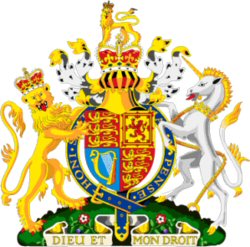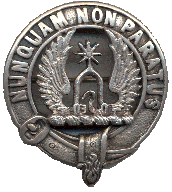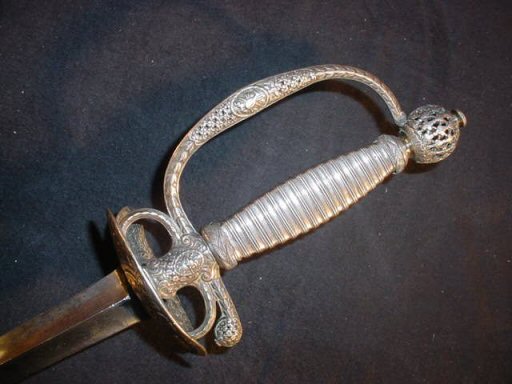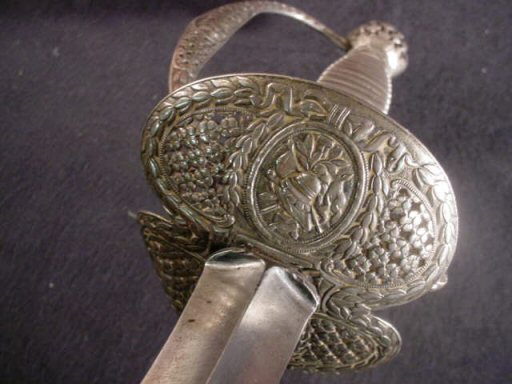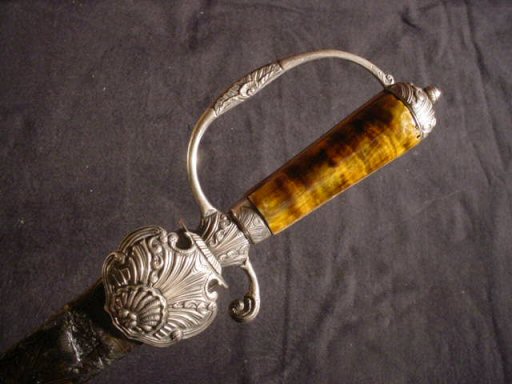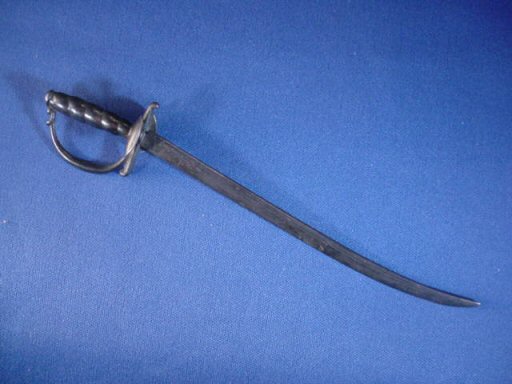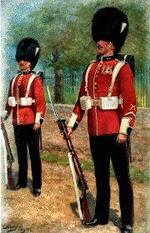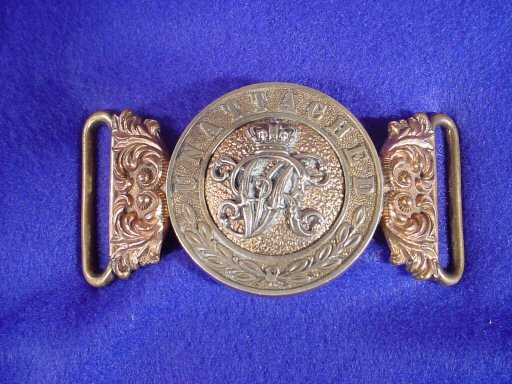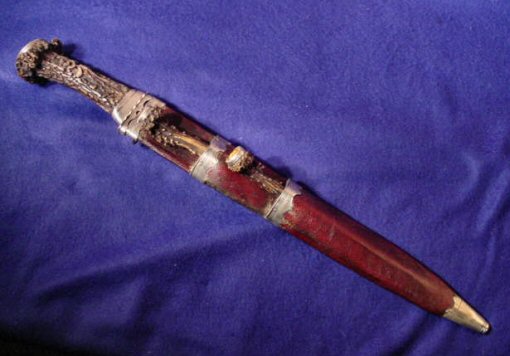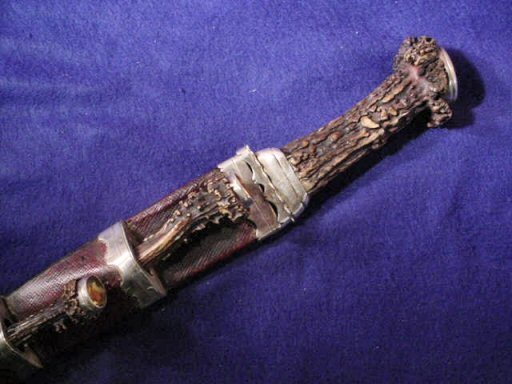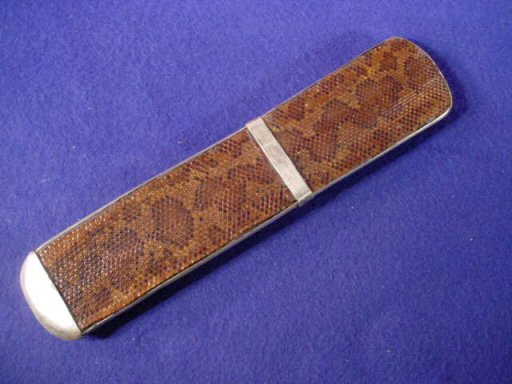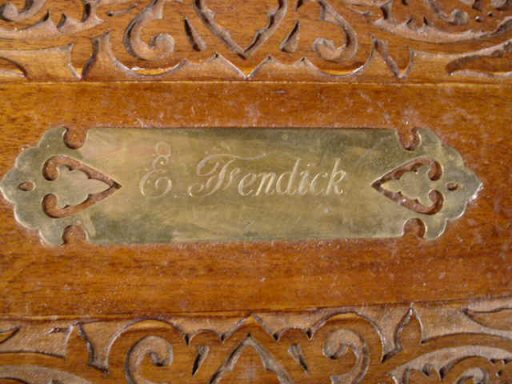|
|
|
|
Britain and Scotland
Page 1
|
|
|
|
Because of the many requests, we at Germania have finally opened a section for weapons, badges, etc., of the British Empire. We are essentially a site for Germanophiles (this is, lovers of all that is Germanic or Teutonic), but having said that, it must be realized that the English, Scottish, and Welsh people have the same blood, the same origin. Although England, through its colonial aspirations and Imperial agenda, made itself the enemy of most of the known world in its martial past. Its soldiers have shown extreme proficiency in the art of war. They, like their German cousins, had arrived at extreme martial excellence even though in the light of historical revisionism it seems wasted because of the ends of the fratricidal wars known as World War I and World War II, where the empire was finally lost and now we have the likes of a wimp like Tony Blair instead of good King Arthur. We could go on and on about this, but suffice it to say that we are enamored of England’s past glories, not her recent failures. Britannia once ruled the waves (and the land in many cases). These past days of Britannic glory are celebrated with her uniforms, weapons, badges, medals: all relics of better and nobler times. The regal splendor of the kings, princes, and other nobility evoke pictures of the empire when it was master. Those days are gone; never to return as the west declines, but we as Germanophiles can recall those days of splendor and high adventure through the accumulation or even the viewing of these relics of Britannic saga. We also, of course, would highly honor the fighting warriors of the Scottish homeland and even more so because theirs was not conquest. Their claim to ever-remembered glory is in defense of Scotia and service to king and country. They were and are the bravest of the brave. The anthem of the Scots is “Scotland the Brave,” a title well earned in the great conflicts fought by such as William Wallace and Robert the Bruce against the wiles and dubious way of the English warlords of infamy. The Scottish treasure is not silver or gold: it is a sense of freedom and duty to kith and kin and the Scottish lands. “The tunes of glory” resound in the skirl o’ the pipes and the courage of the Scottish fighting man. No nation has been more admired or worse used. Many thousands of kilties have died in England’s fratricidal wars and to absolutely no avail to Scotland or its Germanic folk. The Scottish warrior is the most fearsome fighting machine in the annals of the world’s armies--admired by his foes, but misused by his British officialdom. The horrible conflicts of WWI and WWII saw brave Scottish regiments effectively killing and being killed in a fratricidal bloodbath while the people for whom the war was fought sat back in the wardrooms and enjoyed a shot of Haig and Haig and read the casualty reports. We could take this much farther also, but will terminate this barrage of rationale at this point before our own Scottish blood boils. In any case, Germania now introduces our ‘British Isles’ department and we hope that it is received in the same enthusiasm that our continental relics have. It is our pleasure to now introduce “Britain and Scotland.” |
|
|||||||||||||||||||
|
Magnificent British Small Sword from mid-18th Century (Item BRITSCOT 1-1) |
|||||||||||||||||||
| DESCRIPTION: Here is an extremely fine silver-hilted, small sword of wonderful quality. The case and chased silver of the hilt is extraordinary in that it is so fine as to be possible jeweler made. The pommel is hollow with see-through design. Chased by hand the (D) guard is also hollow and light can be seen through all the parts. This is one of the most excellent examples of this type of sword that we have ever seen. The silver wire-wrapped grip is also with silver ribbon underpinnings: all tight and firm. This looks to be made in London circa 1744-1750. The pierced grips and guard were usually very expensive in their time and would be presumed to have belonged to a gentleman or officer coming from nobility or at least landed gentry of sufficient wealth. The blade shows wear and the decoration is flower petals and various touch marks worn, but very discernable. The blade is of the curved, triangular style with very pronounced rib. The shell guards are also pierced with floral design. The central theme is a montage of what seems to be shields, helmets, lances, etc. This design is repeated on the D-guard. The sword is 37 1/2 inches long overall with the blade being 30 1/2 inches. There is no scabbard as these were of leather and seldom would last this long through the centuries. All in all this is a true museum piece of the highest quality and workmanship: the pride of an able blacksmith and a worthy jeweler.
PRICE: SOLD |
|
||||||||||||
|
English Silver-Hilted Hunting Hanger with Tortoise Grip (Item BRITSCOT 1-2) |
||||||||||||
| DESCRIPTION: Here from the early days of “tally ho” is an elegant relic of the English hunt. This is one of the finest specimens we have ever seen. Besides indulging in the sport of kings, the gentleman who owned this dagger/sword, known as a hanger, might well have worn it as an officer in the King’s service, as well (this was often done with these weapons). The blade is signed on its top edge “Isaac Hurrell.” The knuckle guard is highly hallmarked with four deep strikes, but the only one clearly discernable is a crouching lion with raised paw within a rectangular-shaped logo. This weapon still has its scabbard. This is highly unusual since this piece dates about 1740. The scabbard is in very unusually good shape, but with the usual scoring here and there. The silver engraved tip and throat are intact. The large and wonderful clamshell guard is highly decorated in rococo relief design. The pommel and knuckle guard are also beautifully cast and then hand finished. The entire piece is 28 1/2 inches long with the blade being 22 inches. The tip of the blade has probably been broken in the hunt and then reshaped. A blood groove runs down 15 inches of the length of the blade. The blade stops three-fourths of an inch of entry into the scabbard. This is almost 75 percent usual in very old weapons where the scabbard is constructed in leather because of shrinkage. The grip looks like tortoise, and may well be. At least it is of some sort of organic material and is slightly cracked at the top portion where the pommel cap crowns the grip: possibly some sort of bone? Overall, however, this weapon is in remarkably wonderful condition and is certainly a worthy museum specimen of note: fit for a noble as yourself; and if you have read this far into this particular offering, then that, my friend, is surely what you are.
PRICE: SOLD |
|
|||||
|
A Miniature 18th-Century Silver-Mounted British Sword (Item BRITSCOT 1-3) |
|||||
| DESCRIPTION: Here is a really nice little relic of the days of Britannic glory; more than likely an item from the desk of an officer of the realm. It is well crafted by a jeweler, no doubt. The grip shell guards and D-guard are done in pure darkened silver. The blade is individually stamped with hallmarks to include the half-moon and star, plus a fancy maker mark that is not discernable. The sword is 6 inches long with the blade 4 1/2 inches long. The blade bears blood grooves and is curved. It’s modeled after a typical silver-hilted hanger; probably about 1780. This is a nice genuine article from the days of England’s glory.
PRICE: $195.00 |
|
|||||||
|
Welsh Guards Paper Knife in Solid Silver (Item BRITSCOT 1-4) |
|||||||
| DESCRIPTION: This is a paper or letter opener. We don’t know if it is one of a kind, or possibly struck for all ranking guard officers. It is solid, heavy silver. It was struck by Child & Child, London, and has three distinct, deeply struck hallmarks, one of which is a lion. A globe in a belt formation with anchor is depicted with a scroll at its top with the word ‘Gibraltar.’ At he top crest is the arms of Wales with its three feathers and two crowns one of which is the crown of Elizabeth II. Just prior to the outbreak of the fratricidal World War II, the Welch Guards unit was dispatched to Gibraltar where it remained upon the start of the war. It was subsequently part of the evacuation of Dunkirk that saw 340,000 British troops return to England, compliments of Adolf Hitler, who just didn’t want to massacre fellow Germanic peoples (this is a fact!) and it eventually cost the Germans the possibility of victory. The Wehrmacht could have been knocking on the door at number 10 Downing St. within a week. In any case, the bravery of the Guards is without question and this is a great souvenir of this illustrious regiment of foot. The paper knife or letter opener measures 11 inches and is in very fine condition. The curved blade is reminiscent of its time in Egypt in the 1920s—oriental and sinister looking. This is a rather “crackerjack” item, indeed.
PRICE: $450.00; rare and exotic |
|
|
|
Officer’s Belt Buckle in Brass and Silver (Item BRITSCOT 1-4a) |
|
| DESCRIPTION: Here is a very unusual Victorian British belt buckle for an unattached officer. This would be from a British officer in the India service. These buckles are extremely rare. Basically, they were from an officer pool whereby regiments could draw from. They often were retired officers who chose to make themselves available once again for active service.
PRICE: SOLD |
|
|||||||||
|
Scottish Hunter’s Dirk (Item BRITSCOT 1-7; SCOTWEAPON 1-6) SOLD |
|||||||||
| DESCRIPTION: This is a very rare Scottish dirk of the type once used by Scottish Highlanders who hunted in the mountains. This magnificent dirk is mounted with pure silver fittings. The scabbard is fitted with brown leather and is thus quite different from the dress dirks used by Scots on parade and ceremonial functions. Those were normally quite elegant in appearance. This one is more than elegant. It was designed and used in the hunt for the elusive red, highland stag. The grip is of stag’s horn (used only on the hunting pieces). The Cairngorm-stone mounting on the top of the grip is repeated in smaller size on both of the smaller stag-gripped eating appurtenances (knife and fork). Actually, the dirk with these accouterments was the original historical form for the later, fancy dirks. The dirk was originally a hunter’s weapon for the “Sport of Kings,” but also as a defense against brigands and highwaymen. The small knife and fork were handy utilitarian tools that were used at mealtime in the mountains and glades. The tradition of the Cairngorm stones and usage of silver was not decorative alone. Tradition has it that if the highlander should finally expire along the ‘high road or low road’ and his remains be found, the Scottish wayfarer finding him would take the valuable dirk and it would either be his reward for his assistance in burying the man or selling the dirk for funeral costs. Only in Scotland of old could this be counted on; not in liberal Scotia of today. The blade has the serrated edge used for various purposes in dressing the fallen game. There is some rust pitting about one inch down from the grip on the blade where a constantly worn item like this is most exposed to the elements. The blade is about 12 1/2 inches long. The entire dirk is 19 1/2 inches long (unusually long). This is a museum piece without a doubt and should be the pride of any collection of Scottish cultural items.
PRICE: SOLD |
|
|||||||
|
Fine Scottish Hunting Trousse (Item BRITSCOT 1-9) |
|||||||
| DESCRIPTION: Trousse is a term used to describe the case that might hold items of what the Germans call Besteck, or implements for the dining of meat, while on a hunting expedition. Often, it is all contained in one carrier or scabbard and sometimes includes a small knife, for, and a large chopping or skinning knife. In any event it was mainly a German and central European thing. This one we offer here, however, is strictly as Scottish as the infamous haggis. It’s a two-piece wallet-style trousse, with knife and fork fitted, and decorated with the thistle of Scotia with a Cairngorn stone (amethyst) right in its center. The material seems to be snakeskin; possibly from one of the serpents of India or Africa, where thousands of Scottish solders served for countless years in the jungles and deserts. The handles or grips of the two flatware pieces are of Scottish-banded agate in the rare blue-gray stone often referred to as Montrose gray, a beautiful striated agate native to Scotland and quite rare to see in pieces this large. These are usually seen in petite pieces of jewelry offered by expensive studios handling antique jewelry. The knife measures 8 1/2 inches handle and blade. The fork measures 7 1/2 inches. The carrier is about 9 inches long and 2 inches wide with silver support framing throughout. We believe this trousse is from the late Victorian period. In the Middle Ages most of the nobility were devoted hunters. It was a sport that also helped to train young men for war as well as providing meat for the table. In Scotland the landed gentry continued the medieval practice of the trousse right up to the turn of the 20th century; mostly in the noble houses. This is an excellent historical find in amazingly perfect condition.
PRICE: Sold |
|
||||||||||||||||||||||||||||||||||||||||||||||||||||||
|
Stalingrad Chest (Item BRITSCOT 1-10; RUSO 4-5) |
||||||||||||||||||||||||||||||||||||||||||||||||||||||
| DESCRIPTION: This is not an item that I can claim a liking for. I won’t go into why; I’m a Germanophile. On the other hand it is a practically unique piece of world war history and will be a major feature of a display in a museum. What is it? It’s a wooden, hand-carved chest containing the whole story of the presentation of the Stalingrad sword 10 months after the German surrender. Winston Churchill presented this sword in recognition of the fact that the Russian communists (with the aid of the weather) had defeated the Germans at Stalingrad. It bears this engraved legend: “To the steel-hearted citizens of Stalingrad, a gift from King George VI as a token of homage of the British people.” Of course he said this tongue in cheek because he knew what lurked in Stalin’s black heart. The massive sword was forged by the Wilkinson Sword Company and several artists worked on it; some of them not regular Wilkinson employees, but special artists in their own right. One of these men was a fellow by the name of E. Fendick [Fendrick] and he worked for Johnson Matthey Jewellery Products in Hatton Garden, probably the most famous jewelers in London. All the gold and silver parts of the thing were made by Leslie Durbin, jeweler extraordinaire, while C.J. Shiner, silversmith, did the decorative finish on these parts. Other artists were Percy Metcalf and R. Gleadowe. Fendick and E.H. Lasiter were responsible for the gilding and rhodium plating on the sword. Now what we offer is the actual casket that was presented to eight of these artists in appreciation under the official auspices of the old murderer “Uncle Joe Stalin.” Of these eight only two are still known as to their whereabouts. The one presented to Leslie was damaged in a flood and is no longer known where it is. The one given to the designer of the sword, R. Gleadowe, was presented to the London Goldsmiths Hall by his widow, and this is exhibited in the display hall with the sword when it was loaned to the museum. The only one of these important relics available today is the one we offer. Although it’s not the brightest star in the sky for ardent Germanophiles, it’s probably the most important thing we have ever offered in the way of a non-German historical relic. When the casket albums were presented it was at a vodka party at the Russian Embassy in London where they were given the large albums with massive wooden bindings that contained pictures of Stalingrad and of all the commie generals concerned in its final battle.
PRICE: $7,500.00; not bad for the only one to be had in all the world |
Page One |
Please refer to item designator in parentheses in all correspondence.
Please E-mail for any additional information you may need.If you prefer, contact 'Germania' at PO Box 68, Lakemont, GA 30552
or call at 706.782.1668.
Please! do not call during the wee hours of the morning. The best time for calling us is between 9 and 11 am and between 9 and 11 pm eastern time.


